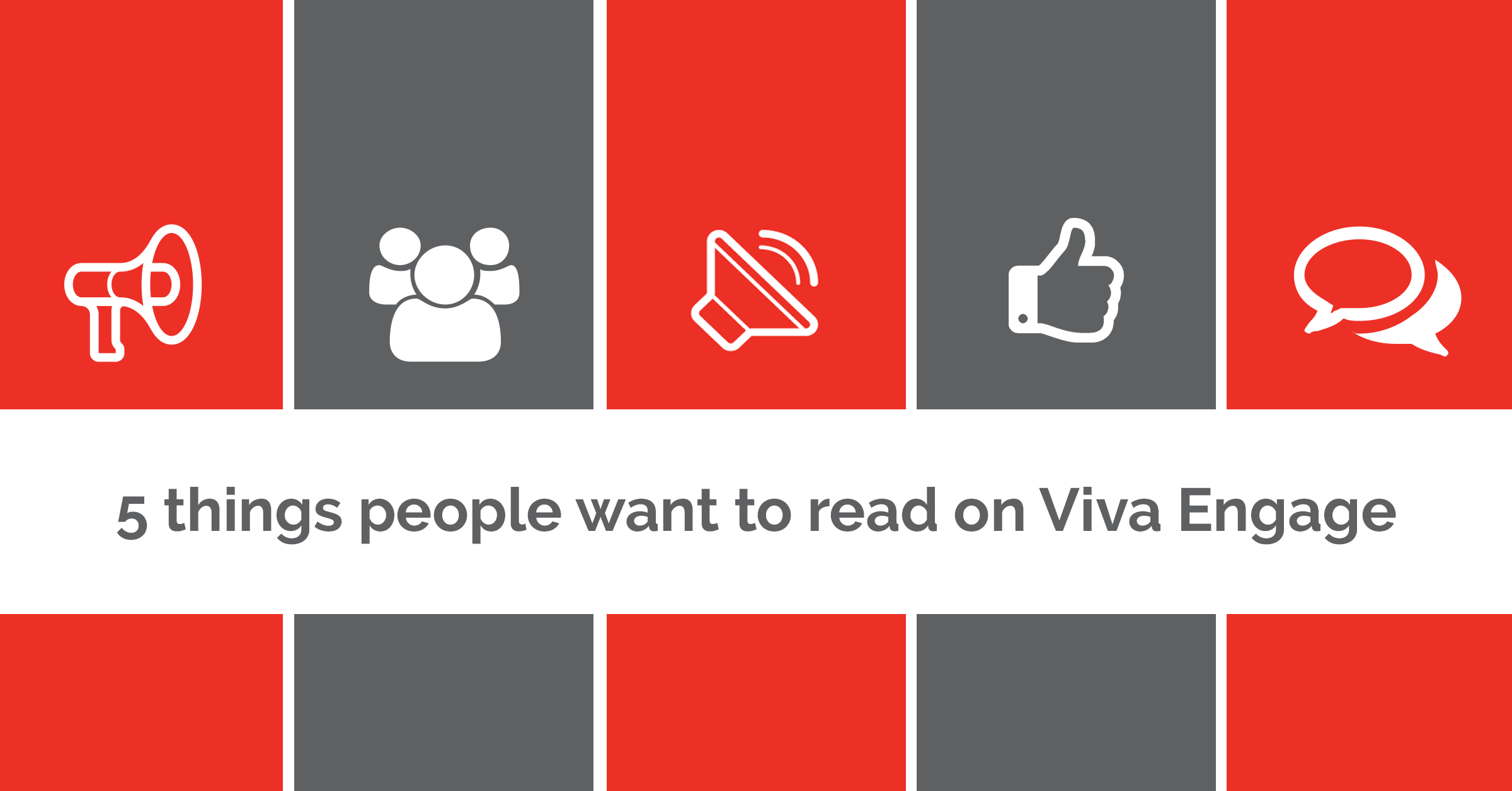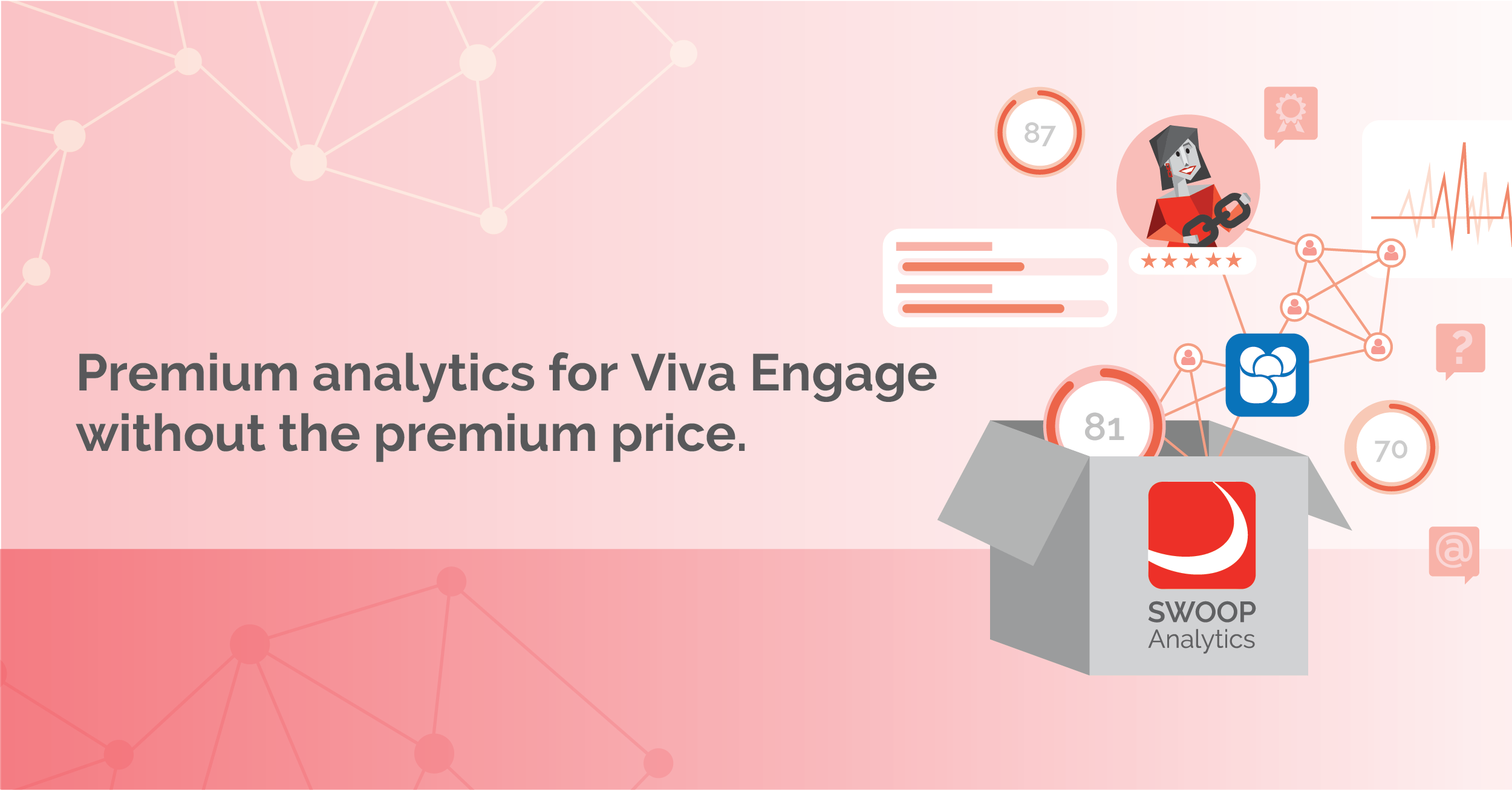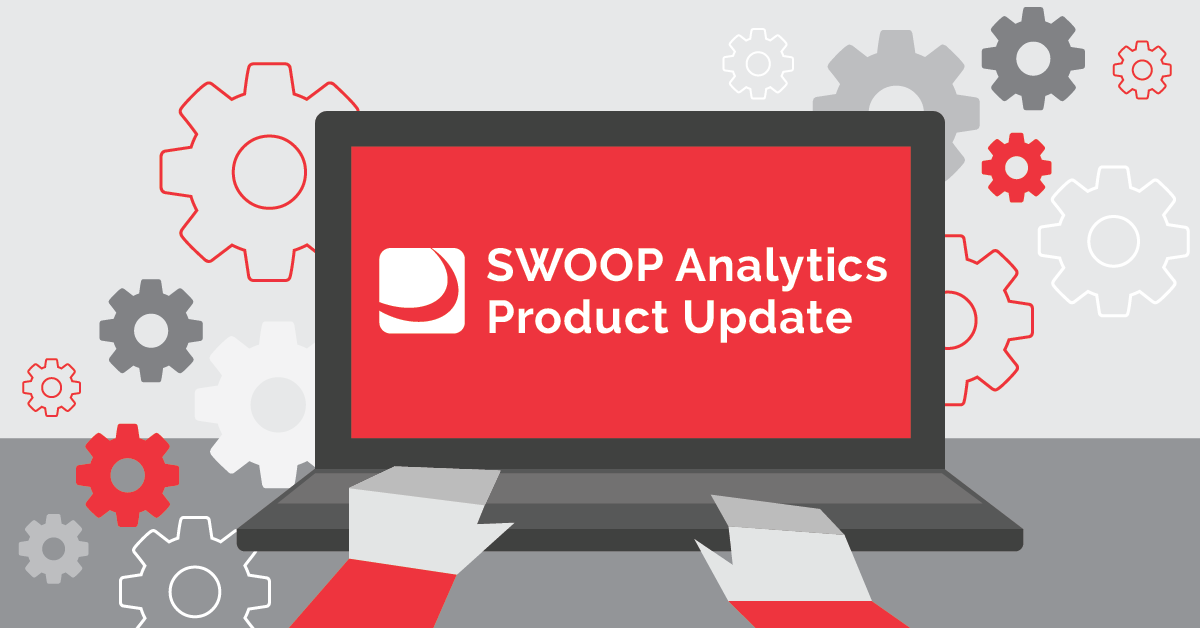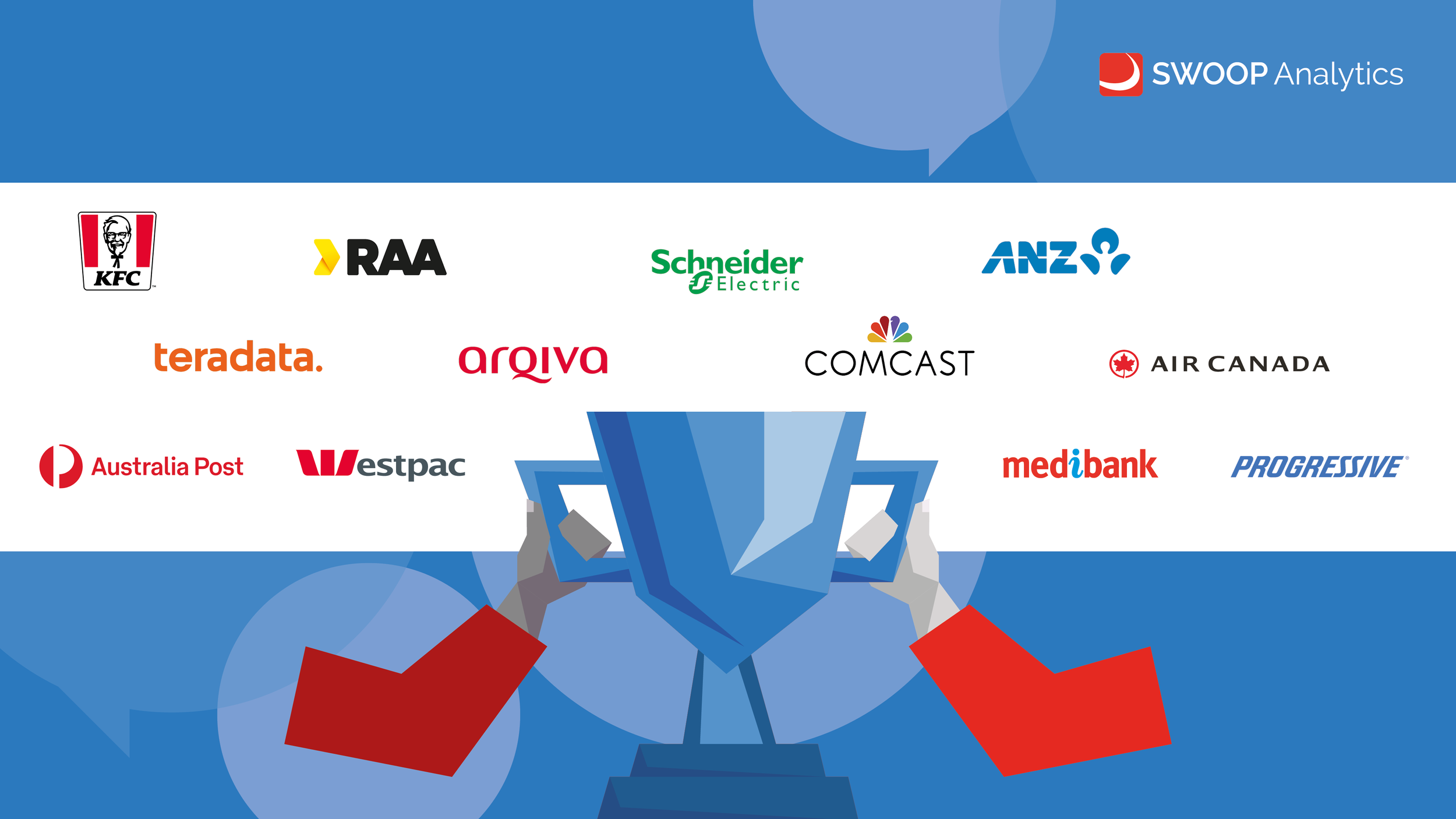
SWOOP Blog
Latest Articles
Blog Archive

Workplace networks are growing and maturing – SWOOP benchmarking
SWOOP has conducted the world’s largest-ever analysis of Workplace by Facebook networks, examining 68 organisations worldwide who opted into SWOOP’s benchmarking. The analysis represents more than 630,000 users over a six-month period, a significant proportion of Workplace’s two million paid users, and more than 15 million online interactions, across a breadth of industry sectors and geographies.

What impact do leaders have on collaboration? Show me the numbers!
One of our most enduring observations from organisations successfully using Enterprise Social Networking (ESN) platforms is the important role the CEO and executive leaders have played in the network’s success.

Engagement At Scale: What Senior Leaders Need To Do
It is more important than ever for senior leaders to build trust by establishing two-way conversations with their people – at scale. In this article, we’ll give simple, practical and evidence-based tips for achieving this spending just five minutes per day. We’ll also show you how to measure this at the individual level.

Engagement 3.0? SWOOP has you covered
We were intrigued and somewhat excited when we saw HR guru Josh Bergin’s take on the evolution of the Employee Engagement marketplace. Bergin is an internationally renowned HR, People and Talent analyst, who recently provided his Top 5 Digital trends in HR.

How many groups should you join?
It’s a busy day, and you’re a busy person. Just how many groups can you realistically participate in on your enterprise social network? Pick a number and we’ll get back to that in a moment.

Less is Not Always More with Enterprise Social
While Enterprise Social Networking sites have taken their lead from consumer-facing Social Media platforms, there are many situations where good practices in social media just do not map over to Enterprise Social.

What Does it Take to Build an Effective Digital Team?
We recently completed what we believe is the largest study of digital team collaboration performance ever undertaken. We analyzed 1,360 digital teams from nearly 70 organizations from a full breadth of industries and geographies. The digital interactions of over 400,000 team members and nearly 2 million interactions over an extended 6-month period were analyzed. Our sample was drawn from users of the collaboration platform Workplace by Facebook, where groups have been self-identified as a team.

How long does it take before SWOOP has an impact on your ESN?
This question was recently posed to us and we didn’t have a quick answer. In this post we have taken the time to make a considered response to a question we expect all of those considering SWOOP would be interested in.

Move Beyond Social Media to Benchmark Your Digital Workplace Performance
Many organizations equate digital workplace performance to social media consumption. Senior leaders communicate their vision and objectives down through the organizational hierarchy, with success measured through the perceived employee engagement with those corporate messages. We have been benchmarking organizations’ digital collaboration performance for more than three years, building a database with more than 130 organizations, more than 2 million employees and more than 23 million digital interactions in the process.

"Social" Groups in Enterprise Social Networks
In this final article in our series on Enterprise Social Group types, we address “non-work” groups and their importance to community success.

Announcement and Broadcasting Groups
When it comes to making an all-company announcement, arguably the richest channel is always face to face. But for large and distributed organisations, that becomes impractical. With an Enterprise Social Network (ESN), the CEO and executive can speak directly to staff at all levels, making the ESN a rich channel that can scale for large and distributed businesses.
This post continues SWOOP’s series on Groups within ESN platforms. The ‘Announcements’ group is often one of the first formed on a newly installed ESN; a venue for the CEO and other leaders to speak with all employees.

Executive engagement – the key to a successful enterprise social network
The No.1 way to get employees engaged on a company’s Enterprise Social Network (ESN) is getting leaders to use the platform, according to communications managers at some of the world’s biggest companies.
If a leader, including the CEO, is making the time to share ideas and connect on the social network platform, even the busiest front-line worker or middle manager would find it hard to explain why they can’t do so.
“The No.1 way to get more people on board is by saying; ‘Your leader is there, or your CEO is there, why aren’t you?’,” said Syngenta’s Communications Manager and Yammer Channel Manager, Melinda Schaller.

Forums & Discussion Boards - for Problem Solving and Idea Sharing
Have you ever asked an online group in your organisation to put a price on the value gained from sharing ideas? Have they saved time, shared knowledge or provided new opportunities?
We think you’ll be surprised at how quickly the value, and dollars saved, adds up. But it’s important to be purposeful and focused when establishing an online forum.
This post continues on our theme for addressing the different group types typically found on Enterprise Social Network (ESN) platforms.

Are Private Groups More Openly Sharing than Public Groups?
Amy Dolzine from accounting firm EY recently reflected on five years of observing Yammer groups, both public and private, and like many of us has been promoting transparency and open group collaboration. However, she made the following observation: “In my observations, completely without data, it feels like having private spaces where the audience is limited to a select group, ironically enables people to be more open. When you ask people in an org to be vulnerable to all, people are not as yet willing to ask the difficult questions, and people are less willing to answer. But in a smaller subset they are.”
Amy’s post intrigued us, perhaps because in some way it resonates with what we have observed ourselves. We often hear that private groups provide a safe place to speak openly. At SWOOP we are the ‘data people’ and because of that we felt compelled to see what evidence, using our Yammer benchmarking facilities, we could find.

Building Online Communities of Practice
Communities of Practice, or CoP, are a centrepiece of Knowledge Management programs world-wide. But it is vital these groups are not formed purely because it is easy to do so. They must be generating value, be sustainable and align with an organisation’s core competencies.
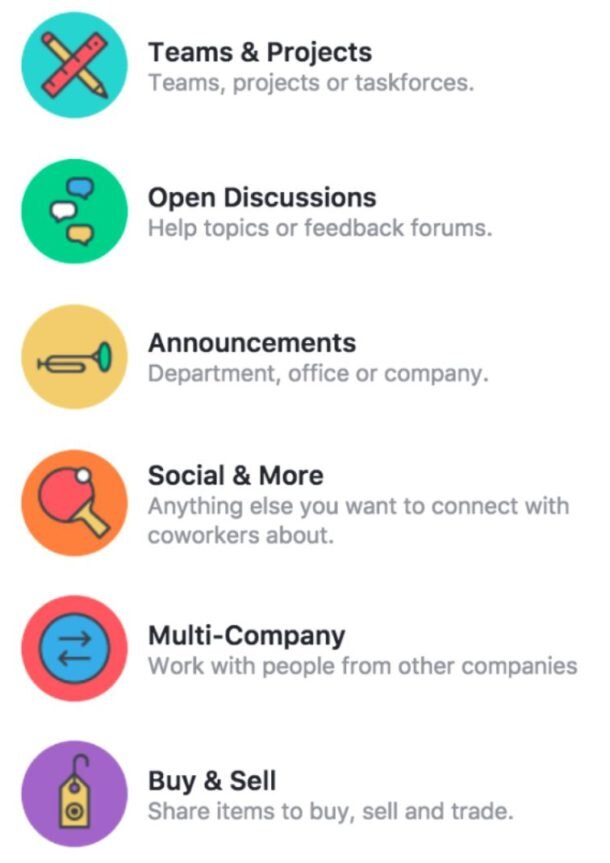
Getting the Best out of Online Groups at Work
The digital workplace has spawned a limitless opportunity to form online groups. Today, organisations can have staff participating in groups emerging through enterprise social, team messaging, online conferencing and a plethora of external groups like LinkedIn and Facebook. No matter the source of their formation, there are some common needs that must be articulated if an online group is to be a success or not. The first step is to be mindful of the type, and therefore, purpose of the online group you are forming. There are vast differences between a group established to share news, to one to support a project team, to one to develop new work practices.

Now that You @Mention It…
Being ‘mentioned’ publicly has long been considered a most worthy form of praise. In war times being “Mentioned in Despatches” was a common form of recognising exceptional performance or behaviour and the term has since migrated into mainstream business. With the advent of Social Media/Networking and the @ mention popularised by Twitter, we have seen the ‘mention’ evolve to more than an instrument of praise, but also one for tagging people into an online conversation. While perhaps not as gratifying, it does send a signal from the ‘tagger’ that I am thinking of you, and vice versa.

How Enterprise Social Systems Can Help Build Diversity & Inclusion
Gerald C. (Jerry) Kane, the MIT Sloan Management Review guest editor for the Digital Business Initiative recently identified that digital platforms can indeed enjoy the benefits from connecting a diverse workforce; though purposeful intervention would be required. If left to its own, digital platforms will simply reinforce the formal structure and ‘group think’ behaviours. Kane also reported “that while only about 30% of employees from companies at an early stage of digital development say that their company is collaborative, more than 70% of employees from digitally mature companies do.” In summary, the research indicates that collaborative performance is tied to digital maturity. Specific advantages from digital interventions, like increased employee diversification in decision making, required purposeful interventions and cannot be left to organic self-management.

The power of the question mark
At SWOOP Analytics we examine interaction patterns between people on enterprise social networks Yammer by Microsoft and Workplace by Facebook. One of the things I have always wanted to uncover is how many questions are being asked, and what – if any – impact is made by asking questions.
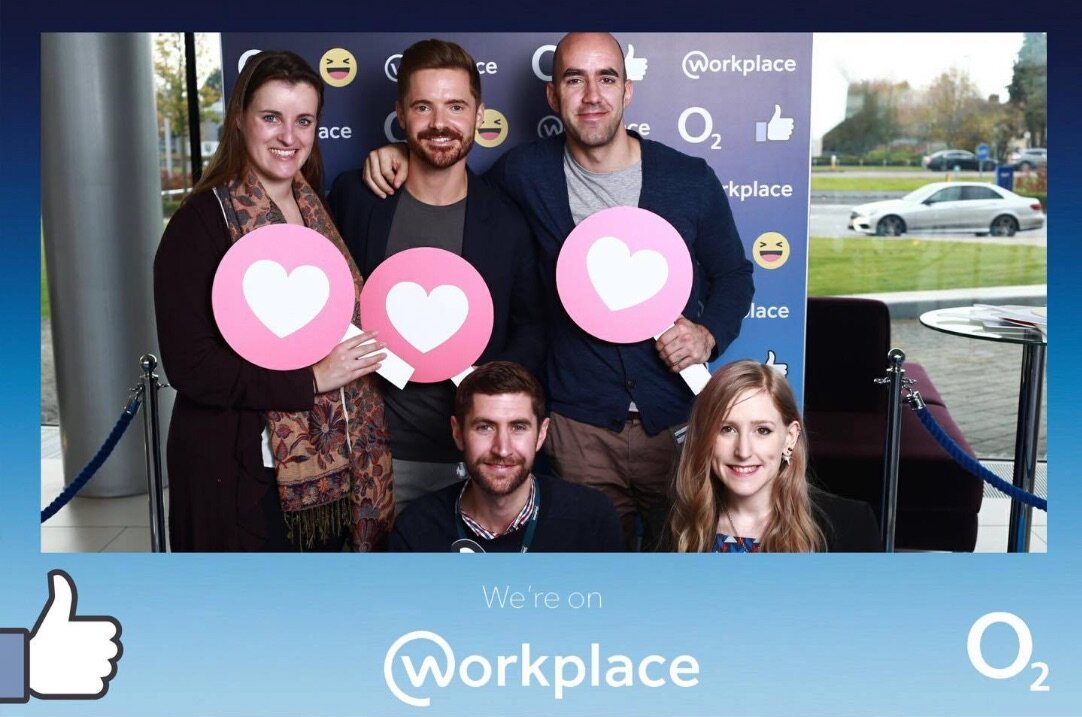
From Friends to Work Colleagues to Friends at Work: The Great Facebook Circle of Life
Do you have a core network at work? Do your colleagues have core networks at work? How dense are the networks across your whole organisation? Dense, reciprocated networks may not guarantee friendship, but friendships cannot exist without them. You will need SWOOP to find out.


